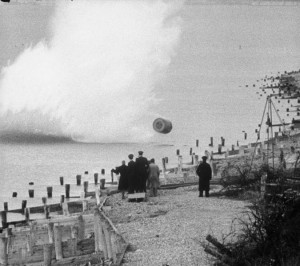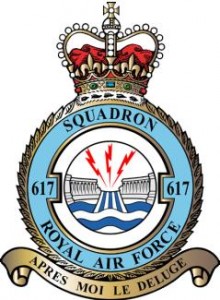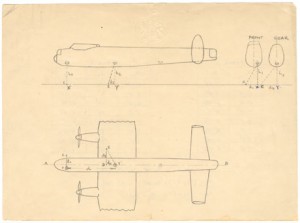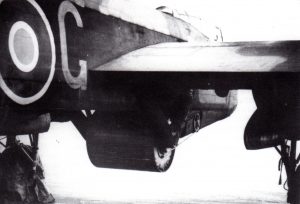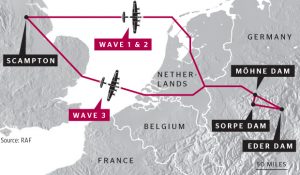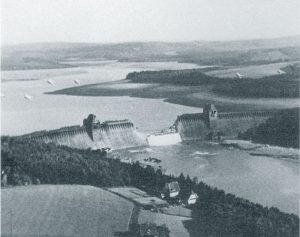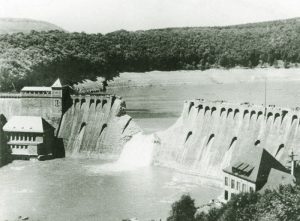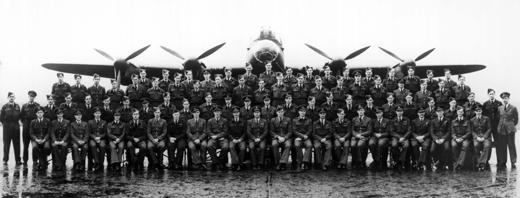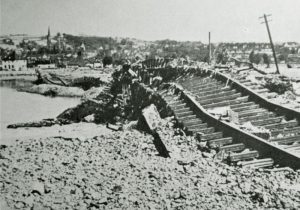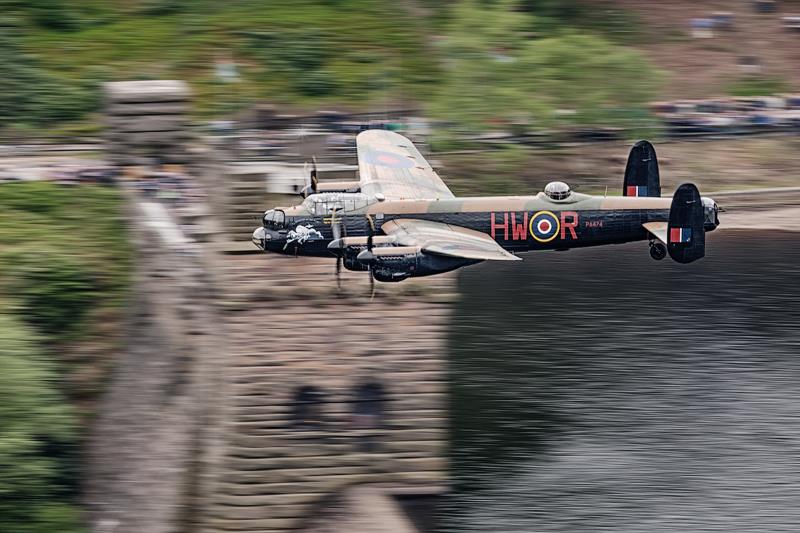
( Image Credit: Air Team Canon)
The night of May 16-17th, 1943 saw the execution of Operation Chastise, better known as the Dambuster Raid, the culmination of a year and a half of hard work, developing and testing an innovative new bouncing bomb, conceived and designed by noted aeronautical engineer Barnes Wallis who originally came up with the idea while skipping marbles across his garden pond.
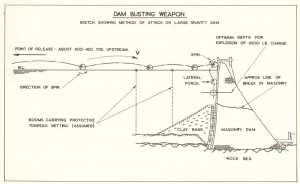

Initial testing of the concept included blowing up a plaster model dam at the Building Research Establishment in Watford in May 1942, followed by the breaching of the disused Nant-y-Gro Dam in Wales in July 1942. The first full-scale trials were at Chesil Beach in January 1943 which demonstrated that a bomb of sufficient size to accomplish the mission could be carried by an Avro Lancaster rather than waiting for a larger bomber such as the Vickers Windsor to be built, which was at best over a year away from production, and which ultimately never progressed past the prototype stage of development. On February 26, 1943, the order was given that 30 Lancasters were to be allocated to the mission and the target date was set for May, when water levels would be at their highest and breaches of the dams would cause the most damage.
In order for the bomb to work an extremely precise release would be required, more precise that anything ever attempted. The bomb would have to be back-spinning at 500 RPM, dropped from a height of 60 feet, at a speed of 240MPH and an exact distance from the target. If any of the variables were off when it was dropped the bomb was not likely to succeed in destroying its target. The operation was assigned to No. 5 Group RAF which formed a new squadron to undertake the mission, the No. 617 Squadron. Headed by 24 year-old Wing Commander Guy Gibson, already veteran of over 170 bombing and night-fighter missions, 21 bomber crews were hand picked from the existing squadrons in 5 Group. These crews included RAF personnel of several different nationalities, as well as members of the Royal Australian Air Force, Royal Canadian Air Force and the Royal New Zealand Air Force, who were attached to 5 Group under the British Commonwealth Air Training Plan.
The precision with which the attacks would have to be carried out with in order for the bouncing bombs to achieve success required many tests and much pilot training, which was to consist of flying and navigating at extremely low altitude. They then switched to flying over water. This created its own set of problems for the pilots, as it was near impossible for them to accurately judge their altitude while flying over the over relatively featureless surface that water presented. There were also significant technical problems to solve, the first one being how flight crews were to determine when the aircraft was at optimum distance from their target. Both the Möhne and Eder Dams had towers at each end. A special targeting device with two prongs, marking the angle the two towers would be at when viewed when the plane was at the correct distance from the dam, would show the crew when to release the bomb. Altimeters of the day were not sufficiently accurate to get the planes to the correct altitude for the bomb release, but the solution was as simple as it was ingenious, two spotlights were mounted at specific angles on the underside of the plane, one under the nose and the other under the fuselage, so that at the correct height the light beams would converge to a single spot on the surface of the water below. The crews practiced again and again in the dark over reservoirs in England and the final design of the bomb was successfully drop-tested by the 617 Squadron at the Elan Valley Reservoirs in late April. The aircraft were modified Avro Lancaster Mk IIIs, known as B Mark III Special (Type 464 Provisioning). Modifications included reduced weight, achieved by removing most of the planes internal armor and the removal of the mid-upper machine gun turret. The size and unusual shape of the payload required that the bomb-bay doors be removed and the bomb was hung below the fuselage out in the air stream, along with the drive that would spin it up to speed when the time for the drop approached.
(Image Credit : Royal Air Force)
The bombs were delivered to the squadron on May 13th and on the 15th, the squadron’s two flight commanders, Squadron Leader Henry Maudslay and Sqn Ldr H. M. “Dinghy” Young, deputy for the Möhne attack, Fl.Lt. John V.Hopgood and the squadron bombing leader, Flight Lieutenant Bob Hay. The rest of the crews were told at a series of briefings the following day. For the raid, the squadron was divided into three formations, with the aircraft using two routes, selected to avoid known concentrations of German anti-aircraft flak, and timed so that they would cross the enemy coastline simultaneously. The planes began departing Formation No. 1 entered continental Europe between Walcheren and Schouwen, flew over the Netherlands, skirted the airbases at Gilze-Rijen and Eindhoven, curved around the Ruhr defenses, and turned north to avoid Hamm before turning south to head for the Möhne River. Formation No. 2 flew further north, cutting over Vlieland and crossing the IJsselmeer before joining the first route near Wesel and then flying south beyond the Möhne to the Sorpe River. A total of 19 aircraft had successfully embarked on the mission set out at dark; nine were to attack the Mohne Dam and then proceed to the Eder, five were to attack the Sorpe and five constituted a “flying reserve.”
The first casualties were suffered soon after reaching the Dutch coast. Formation No. 2 did not fare well: one aircraft lost its radio to flak and turned back over the IJsselmeer, while another flew too low and struck the sea, losing his bomb in the water; though the pilot recovered control and returned to base. Two Lancasters crossed over the coast near the island of Texel. One was shot down by flak shortly afterwards, crashing into the Waddenzee and the other aircraft hit high tension lines and crashed east of Rees, near Haldern. Only the delayed bomber piloted by McCarthy survived to cross the Netherlands. Formation No. 1 fared a bit better losing only one air craft enroute to the Mohne when it struck struck high tension lines near Marbeck and crashed into a field.
The bombers flew at extremely low altitudes with only the moon illuminating their way, staying below German radar and lessening the ability for ground based units to fire upon them, reportedly utilizing firebreaks to fly below treetop level within the region’s forests, skimming over the ground at less than 100 feet of altitude.
Gibson led the attack on the Mohne dam and successfully released his bomb. The next bomber was caught in the blast from its bomb and crashed. To support his pilots, Gibson circled back to draw German flak while the others tried to get lined up for their runs while under heavy fire. Following a successful run by Flight Lieutenant Harold Martin, Squadron Leader Henry Young dropped the bomb that finally breached the dam. With the Mohne Dam broken, Gibson led the formation to Eder where his three remaining aircraft negotiated tricky terrain to score hits on the dam and breaking it as well.
Formation 2’s difficulties continued, their target, the earthen Scorpe dam, unlike the the masonry Mohne and Eder was of significantly heavier construction and proved to be more difficult to hit, the attack differing from the previous ones in two ways: the UPKEEP bomb was not spun and the approach was made along the length of the dam, not at a right angle over the reservoir due to the topography of the valley. Abetted by increasing fog and the fact that the dam was undefended, Formation 2, was able to make 10 runs in order to best get aligned before finally releasing a bomb, but the bomb only damaged the crest of the dam. Two planes from Formation 3 attacked the Scorpe as well, but they too were unable to inflict substantial damage. The remaining two reserve aircraft from Formation 3 were dispatched to the secondary targets at Eneppe and Lister. Eneppe was hit but not significantly damaged while Lister escaped attack as the plane assigned to target it was shot down before making it to its target.
On the way back, still flying treetop level, two more bombers were lost to German flak. Of the 153 Airmen who took off on Operation Chastise, 53 were killed and three were taken prisoner by the Germans after surviving the crash of their planes. Of the 19 planes that set out, two were forced to return to the base without participating in the bombing runs, eight were destroyed and nine planes limped in to Scampton the next morning.
Even with the significant loss of life borne by the airmen, the operation was hailed an incredible success at the time, though more recently historians have downplayed its effects. The breaking of the Möhne Dam resulted in a breach around 250 feet wide and 292 feet deep. The destroyed dam poured around 330 million tons of water, Resulting in a torrent of water around 32 feet high and travelling at around 15 MPH which swept through the Möhne and Ruhr river valleys. A few mines were flooded, 11 small factories and 92 houses were destroyed and 114 factories and 971 houses were damaged. The floods washed away about 25 roads, railways and bridges as the flood waters spread for around 50 miles from the source. Estimates show that before the raid, water production on the Ruhr was 1 million tons, this dropped to a quarter of that level after the raid. The Eder drains towards the east into the Fulda which runs into the Weser to the North Sea. The main purpose of the Edersee was then, as it is now, to act as a reservoir to keep the Weser and the Mittellandkanal navigable during the summer months. The wave from the breach was not strong enough to result in significant damage by the time it hit Kassel approximately 20 miles downstream.
The greatest impact on the Ruhr armaments production was the loss of hydroelectric power. Two powerplants (producing 5,100 kilowatts) associated with the dam were destroyed and seven others were damaged. This resulted in a loss of electrical power in the factories and many households in the region for two weeks. In May 1943 coal production dropped by 400,000 tons which German sources accredit to the effects of the raid. Casualty totals for the area were 1,650 people killed with hundreds missing, though 1,026 of the bodies were foreign prisoners of war and forced-labourers.
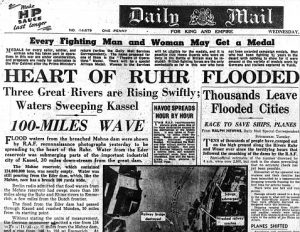
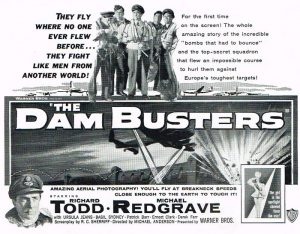
Here in the States, the Pima Air and Space Museum will be hosting a “British Invasion” Day on May 18th, as well as hosting a special presentation on the Dambuster Raid on May 25th, given by speaker Jim Evans who will walk attendees through the details of the raid and assess its importance and effectiveness in a seminar that will begin at 10AM








